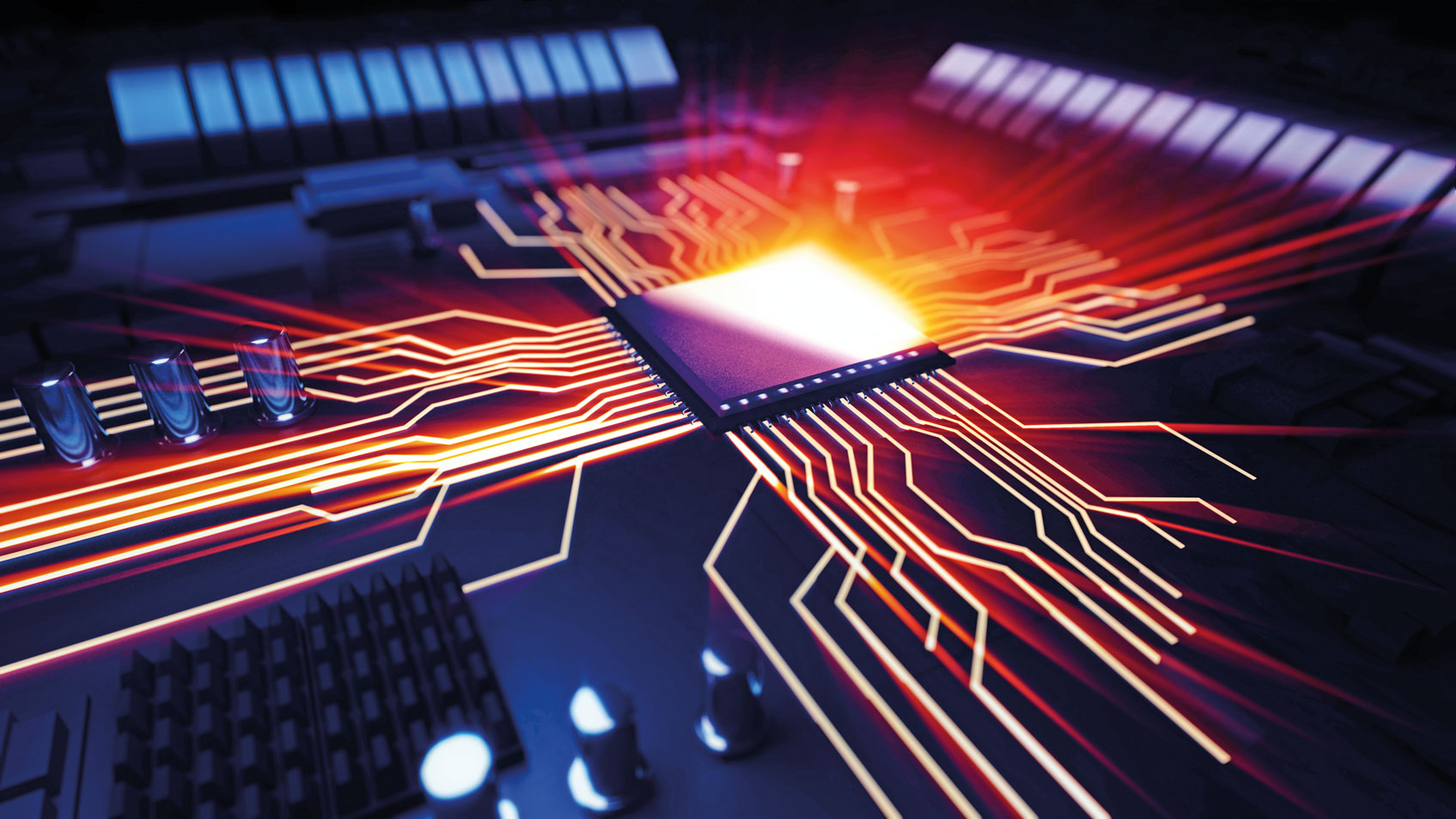Life without mobile communications is difficult to imagine today. Digitalization marks and pervades our daily lives. The semiconductor industry has matured into a market with not just powerful but steadier growth. Growth drivers include the Internet of Things, wearables and new applications like virtual reality.
EXPLOIT. Growing in the core business
With agility and investment: COMET expands its position in the booming semiconductor market.
Reading floor plans is yesterday's way: Today you can step into and tour your new home long before it is built – by donning a virtual reality headset. You can control and monitor your heating system at home or at the chalet with your smartphone. Vast amounts of data are transmitted every second. Augmented reality is used to design, build, sell and maintain our cars. And now, cars are learning to drive themselves. The Internet of Things and artificial intelligence revolutionize the way we produce things. Enabling all this are semiconductor chips and sensors.
 “With COMET PCT's radio frequency power capabilities, our customers know they can rely on us for rapid, repeatable control processes combined with high performance and yields in production.” Michael Kammerer, President, PCT
“With COMET PCT's radio frequency power capabilities, our customers know they can rely on us for rapid, repeatable control processes combined with high performance and yields in production.” Michael Kammerer, President, PCT
The semiconductor industry has matured into a market with not just powerful but steadier growth – and is still dramatically picking up speed. The traditional semiconductor cycle with large swings in demand is a thing of the past. As a result of constant technological change, it is being replaced by more sustained and dependable demand that is growing exponentially. The demand for plasma control technology, which is needed to make memory chips, is following along at a linear rate of growth. This trend offers growth opportunities for COMET in various areas.
The demand for RF power solutions will soar by 2019 due to multiple coating of the chips. Market researchers expect 3D-NAND to take the majority of the market, with the share of 2D flash memory to fall below the 50% mark in 2017. This has implications for the required equipment and industry capacity.
High investment in capacity expansion and new equipment
Whether producers of simple chips and sensors for the IoT, or of complex, 3D high-performance memory: In the coming years the industry will invest in its existing manufacturing processes and the construction of new semiconductor fabs. Experts estimate that 55 new large fabs will be built between 2017 and 2020. China alone is to account for 26 of these, ten are to be located in the Americas and nine in Taiwan.
The semiconductor industry is confronted with the challenge of having to produce ever more units and do it ever more rapidly, reliably and cost-efficiently. The industry players affected by this worldwide include, for example, companies that manufacture simple sensors and memory for IoT applications. They need dependable, faster, efficient production systems that guarantee an uptime of more than 95%. Old systems are unable to do this, but the technology from COMET can – and at lower cost.
Unlike those chips for simpler purposes, mobile communication and cloud applications require high-performance memory chips. 3D chips have captured the market. New and more powerful generations emerge at ever shorter intervals. 3D chips need to be coated multiple times. For the manufacturers, every additional coating step means the use of more plasma control sets in the fabrication process.
Major equipment investment offering growth potential for COMET Plasma Control Technologies is still ahead, both in existing and in still-to-be-built semiconductor fabrication plants (fabs) for 3D chip manufacturing, especially in China. In the RF power business, PCT is therefore planning for average annual growth of about 10% to 2020.
 Through the on-board computer we already control our cars. Soon, the computer will chauffeur us autonomously to our destination. The automotive industry is one of the new demand drivers for the semiconductor industry.
Through the on-board computer we already control our cars. Soon, the computer will chauffeur us autonomously to our destination. The automotive industry is one of the new demand drivers for the semiconductor industry.
The industry is booming. Does this mean success comes easy now? Not in the least – the semiconductor market is a rigorous taskmaster and the industry's demands on partners and solutions are always rising. Competition is intensifying. Suppliers who want a share of this growth must continually prove themselves with innovative solutions and the agility to develop answers to new challenges. Speed, extreme precision and absolute reliability are crucial both for the partnerships and in the products. Even the tiniest non-conformities can affect quality and entail costs that the industry cannot afford. Innovating and delivering to these high standards is what it takes to survive and thrive in this market.
This requires constant investment in partnerships and solutions, in building new capabilities, and in processes and tools for new forms of collaboration. That is how PCT became and remains, for instance, a top-five partner to a customer that, as one of the market's leading movers, has the highest expectations of its key partners, whom it must be able to rely on completely.
A growing imperative for COMET is to anticipate developments and to fulfill its role as partner even more actively. The best basis for this, and for early access to strategically significant projects, are close and long-standing partnerships like those maintained by PCT with leading suppliers to the semiconductor industry. The reward lies in growing along with the partner, with growth rates far exceeding those of the market. A compelling example is North America, where PCT's growth with its biggest customer in the past few years has outpaced that of the market several times over.
Past investment is paying dividends today for COMET's PCT segment. The new RF generators illustrate this well. The latest generation of these products meets the highest requirements and has been eagerly received by the first customers. It will go into serial production in 2017.
But COMET is already thinking beyond these solutions. Soon to enter the pilot phase is a newly developed, innovative system with which PCT will even more fully answer the needs of industry for more efficient and intelligent production methods. The new system combines seamlessly coordinated hardware and software and allows data to be exchanged in real time. For this product, PCT is currently developing new control software with the latest sensing and measurement technology. With higher measurement accuracy, real-time statistics and preventive maintenance, the system will bring suppliers of the semiconductor and flat panel industries more reliable processes coupled with lower operating costs.
By 2025 the semiconductor market is predicted to grow more than fivefold. Explosive growth is expected from virtual and augmented reality applications, followed by demand from the artificial intelligence segment (intelligent systems, robotics) and IoT. An additional major growth driver will be the automotive industry, where digitalization at every level is in the ascendant: By 2025 it will demand two to three times more semiconductor products than today. Yet another source of demand will be the coming, blazingly fast 5G mobile networks, which will enable data-intensive feats such as remote surgery. Manufacturers making simpler chips and sensors, such as for the IoT business, or producing complex semiconductor memory for applications in augmented and virtual reality, are faced with the challenge of realigning and equipping their manufacturing processes to the latest standards – with reliable and efficient radio frequency technology.




